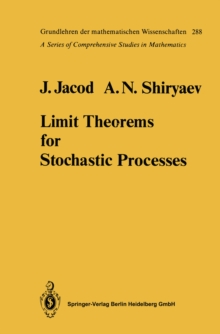
Shock Waves and Reaction-Diffusion Equations PDF
by Joel Smoller
Part of the Grundlehren der mathematischen Wissenschaften series
Description
For this edition, a number of typographical errors and minor slip-ups have been corrected.
In addition, following the persistent encouragement of Olga Oleinik, I have added a new chapter, Chapter 25, which I titled "Recent Results." This chapter is divided into four sections, and in these I have discussed what I consider to be some of the important developments which have come about since the writing of the first edition.
Section I deals with reaction-diffusion equations, and in it are described both the work of C.
Jones, on the stability of the travelling wave for the Fitz-Hugh-Nagumo equations, and symmetry-breaking bifurcations.
Section II deals with some recent results in shock-wave theory.
The main topics considered are L. Tartar's notion of compensated compactness, together with its application to pairs of conservation laws, and T.-P.
Liu's work on the stability of viscous profiles for shock waves.
In the next section, Conley's connection index and connection matrix are described; these general notions are useful in con- structing travelling waves for systems of nonlinear equations.
The final sec- tion, Section IV, is devoted to the very recent results of C.
Jones and R. Gardner, whereby they construct a general theory enabling them to locate the point spectrum of a wide class of linear operators which arise in stability problems for travelling waves.
Their theory is general enough to be applica- ble to many interesting reaction-diffusion systems.
Information
-
Download - Immediately Available
- Format:PDF
- Publisher:Springer New York
- Publication Date:06/12/2012
- Category:
- ISBN:9781461208730
Other Formats
- PDF from £61.20
- Paperback / softback from £199.99
Information
-
Download - Immediately Available
- Format:PDF
- Publisher:Springer New York
- Publication Date:06/12/2012
- Category:
- ISBN:9781461208730










